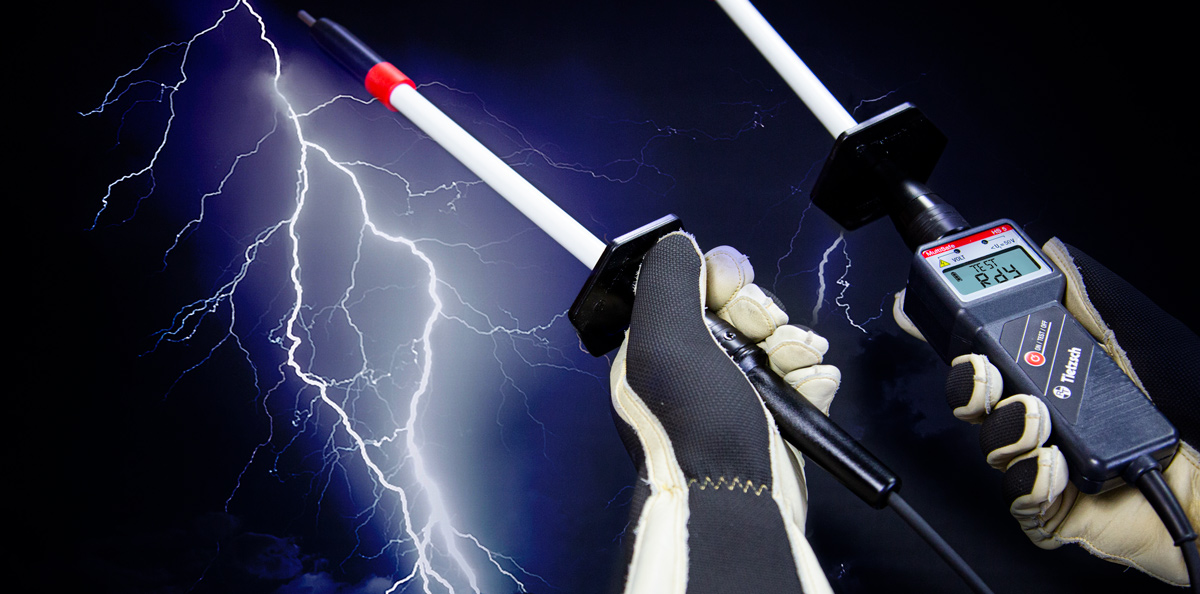HS 5
compact two-pole high voltage tester with accurate display

The warranty period is 3 years.
CAT classifications are gradations (CAT IV – CAT II) of safety for voltages below 1000 V. They enable low-voltage electrical devices (e.g. laptops) to be subject to weaker safety requirements and can therefore be built to save space.
There are no gradations in safety for voltages above 1000 V. Maximum security is always assumed here. Therefore, there are no CAT classifications in the high-voltage range.
Yes. Tietzsch high-voltage testers are generally designed as two-pole voltage testers. Therefore, the voltage is always checked between the + electrode and the ground terminal or the – electrode. Testing with just one electrode, as with capacitive measuring systems, is not possible.
Two-pole voltage testers can detect direct and alternating voltages with a voltage tester. Furthermore, two-pole voltage testers can cover a wide nominal voltage range. Our MultiSafe HS 36 works in the range from 50 V to 36.000 V AC and DC. The selection of the measuring range is carried out automatically, so that operating errors are eliminated. Testing with two-pole systems is significantly safer, especially in systems where the operating voltage can be different.
The disadvantage of two-pole high voltage testers is that the second electrode or ground terminal must always be connected to ground potential. This is minimally more complex than the capacitive test with just one electrode.
We have been developing the housings, electronics, components and software for our devices in-house for more than 70 years.
Our own electronics production produces all circuit boards and electronic components. The housings are partly produced in our company and partly supplied by surrounding companies. The assembly and 100 percent final testing of all devices takes place in our production in Ennepetal.
This means that our devices are genuine quality work “Made in Germany”.
No. Our high voltage testers have a maximum rated voltage of 36.000V AC and DC. Voltages beyond this are no longer covered by the high-voltage tester standard EN 61243-2 and cannot be tested with our devices.
Our high voltage testers comply with the voltage tester standard EN 61243-2 for voltage testers – resistive (ohmic) versions for alternating voltages from 1 kV to 36 kV. This standard primarily applies only to AC voltage testers but can also be applied to DC voltage testers.
Special solutions require adjustments and may include other equivalent but different security measures.
For our high-voltage testers you will find a detailed risk analysis for each product with a precise description of standard conformity.
Safety-relevant assemblies such as high-voltage protective resistors, GRP and epoxy pipes as well as connecting cables are tested and certified for their suitability by external testing institutes.
Calibration of our high-voltage testers is not necessary. The devices do not change any further even after years.
Nevertheless, a repeat test according to EN 61243-2 is required every 6 years at the latest. This test not only checks the function and accuracy, but also checks the safety and insulation of the voltage tester and the connecting cable in order to continue to offer you the greatest possible protection.
The display threshold cannot be set by the user.
Tried-and-tested display thresholds have been set for our high-voltage testers:
HS 5 = 50V AC/DC
HS 11 = 50V AC/DC
HS 36 = 1200V AC/DC
We have set the following display threshold for our telescopic voltage testers:
TT 1 = 250V AC/DC
TT 3 = 400V AC/DC
TT 36 = 1200V AC/DC
However, due to the diverse applications and railway systems, other display thresholds are possible at any time for the telescope systems. Please ask us about this.